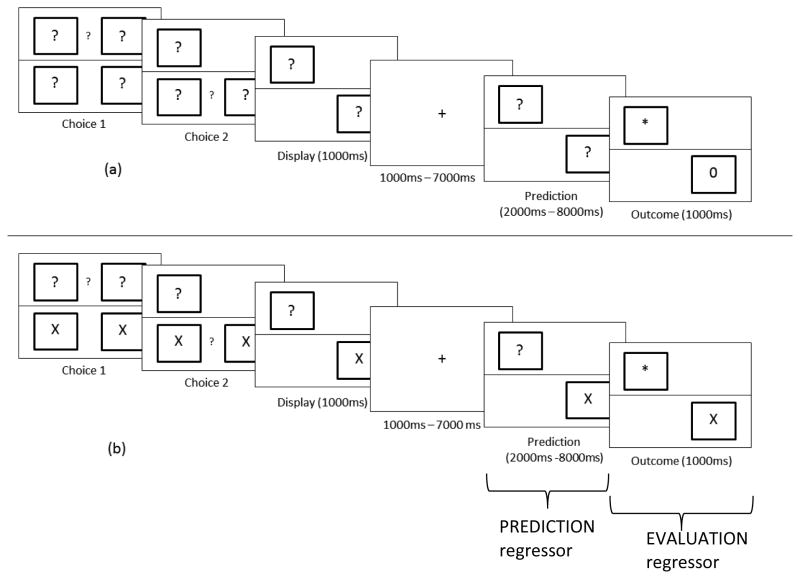Figure 2.
Task design. Dissociation of decision, prediction, and outcome effects. In each trial, the question mark between the two upper or two lower boxes prompted a choice between the adjacent boxes. After a delay to separate out the decision and motor-related activities, subjects were re-presented with their choices, at which point they could predict the impending feedback to be delivered in the Outcome phase of the trial. Outcomes (“*” and “0”) shown later in the chosen boxes indicated that subjects should choose the same box again on the next trial (stay) or, less commonly, choose a different box on the next trial (switch). (a) In the Predict2 condition, participants made a series of two choices and later received outcome feedback for each choice. During the prediction phase of the task, participants could predict the impending outcome(s). (b) In the Predict1 condition, participants also made two choices, but they knew that they would receive only a single outcome cue. No feedback was given for boxes containing an “X”. Instead, participants were told to repeat their previous choice in the next trial. Hence, there was only a single outcome to predict and evaluate in the Predict1 condition. Overall, the task affords distinct activity estimates of decisions, of predicting 1 vs. 2 outcomes, and of receiving 0, 1, or 2 rare switch feedback cues. The actual stimuli were shown to subjects with the colors inverted, i.e. white stimuli on black background.

